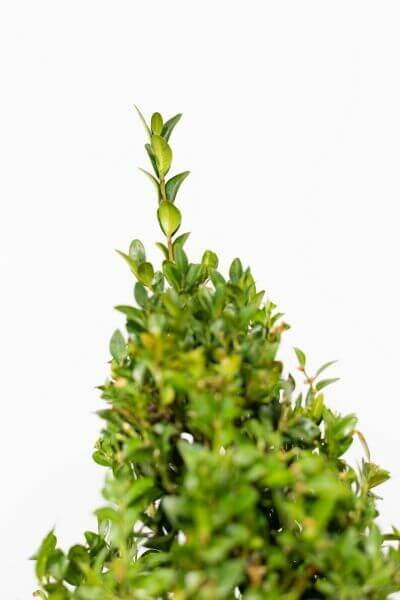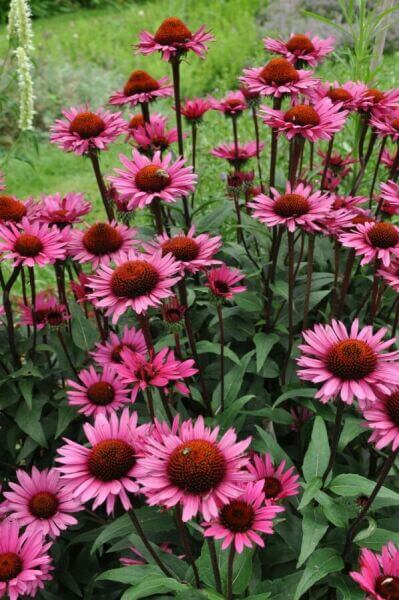Best Hedging Plants For Themed Gardens
Best Hedging Plants For Themed Gardens
Blog Article
Hedging Plants For Windbreaks
Boost your garden's appeal with rich hedge varieties such as Yew (Taxus), Thuja, Laurel, Photinia, and Bamboo, celebrated for their structural integrity and ecological benefits.
Yew and Thuja offer evergreen protection and winter resilience, while Laurel provides rapid growth and broad, aromatic leaves.
Photinia adds seasonal appeal with its lively red foliage, and Bamboo lends a low-maintenance, peaceful atmosphere.
These hedges enhance air quality, decrease noise, and develop tranquil, personal spaces.
Appropriate planting, spacing, and upkeep make sure vigorous growth and eco-friendly harmony.
Explore how these rich ranges can elevate your garden's charm and wellness.
Secret Takeaways
Change Your Garden With Lush Hedge Ranges
- Select Yew for its dense, evergreen growth and exceptional durability.
- Choose Laurel for its quick development and broad leaves, guaranteeing fast personal privacy.
- Pick Photinia for its vibrant seasonal foliage, which turns a striking dark red.
- Utilize Bamboo for a low-maintenance, winter-hardy hedge with aesthetic appeal.
- Space plants 2-3 per meter and prune routinely for ideal development and health.
Popular Hedge Plants
When transforming a garden with lavish hedge ranges, it's necessary to consider popular hedge plants such as Yew, Thuja, Laurel, and Photinia due to their unique characteristics and benefits.
Yew (Taxus) is highly esteemed for its longevity and dense, green growth, making it a prime option for sustaining landscapes.
Thuja is kept in mind for its evergreen foliage and robust winter season strength.
Photinia includes seasonal vibrancy with red leaves that darken with time, producing vibrant visual appeal.
Laurel uses quick development and aromatic, broad leaves, suitable for quick privacy.
Additionally, Bamboo is an outstanding option for atmosphere, using a low-maintenance, winter-hardy choice that improves the garden's aesthetic with its elegant, swaying walking canes.
These choices accommodate a variety of horticultural requirements and choices.
Benefits of Garden Hedges
Garden hedges use a plethora of advantages, making them an important addition to any landscape. These natural barriers are affordable to implement and supply substantial wind security, enhancing air blood circulation and adding to noise decrease. The dense foliage of hedges like Thuja and Beech ensures personal privacy by blocking presence, producing a secluded and tranquil environment.
Hedges also play a crucial function in microclimate regulation, supplying a stable environment that cultivates plant growth and reduces temperature level fluctuations. Their intricate leaf structures filter contaminants, improving air quality and adding to a healthier garden environment.
Moreover, hedges stand out in noise decrease, absorbing and deflecting acoustic waves to lower ambient sound levels. This dual performance of providing both acoustic and visual privacy improves the total tranquility and aesthetic appeal of any garden.
Planting and Upkeep Tips
For a successful hedge, precise preparation of the planting location is crucial. Guarantee the soil has correct pH and drainage to support strong root development.
Area the plants appropriately for the selected types. Water the hedge regularly during its initial development stage, changing as needed with seasonal changes.
Carry out a systematic insect control and illness avoidance method, using organic or chemical treatments when needed. Frequently check for aphids, mites, and fungal infections.
Apply mulch to retain moisture and suppress weeds. Seasonal pruning promotes dense growth and air blood circulation, vital for plant health.
Following these standards will assist you cultivate a lively, well-kept hedge that boosts the appeal of your garden.
Spacing and Cutting Standards
Spacing and Cutting Standards
Correct spacing and cutting are vital for cultivating healthy, aesthetically appealing hedges. Adequate spacing ensures each plant receives sufficient nutrients, light, and airflow.
Follow these standards for ideal hedge upkeep:
- Spacing: Position hedge plants 2-3 plants per meter to motivate robust growth.
- Pruning Methods: Routine pruning is essential for preserving wanted hedge height and shape. Trim brand-new development in summertime and cut down older wood during winter.
- Seasonal Care: Adjust cutting schedules and methods according to seasonal requirements to make sure plant health.
- Hedge Height: Routinely screen and trim to maintain the wanted hedge height and attain uniform visual appeals.
Complying with these actions will guarantee your hedge thrives, enhancing both the appeal and performance of your garden.
Selecting the Right Hedge
Selecting the Right Hedge
Picking the appropriate hedge includes examining elements such as fully grown height, foliage density, and environmental resilience. Effective hedge plant selection needs comprehending each species' development qualities and site-specific flexibility.
For example, Yew (Taxus) uses outstanding longevity and thick growth, while Thuja is notable for its winter season resilience. Furthermore, considering upkeep requirements is crucial; fast-growing types like Laurel or Privet demand routine trimming, whereas low-maintenance choices like Bamboo or Ivy may be more effective for those seeking very little upkeep.
Ecological aspects such as soil type, light accessibility, and wetness conditions ought to likewise guide the choice procedure. This mindful technique ensures the selected hedges will thrive, offering both visual and functional advantages to the garden landscape.
Shipment and Planting Guidance
To guarantee your hedge plants thrive, they ought to be provided by specialized carriers and planted promptly upon arrival.
Follow these vital actions for effective planting:
- Soil Preparation: Enrich the soil with organic matter to enhance drain and nutrient material.
- Planting Depth: Create a trench two times the width and equivalent to the depth of the root ball.
- Watering Techniques: Water thoroughly after planting, keeping the soil regularly wet however not filled.
- Mulching: Apply a layer of mulch to maintain moisture and reduce weeds.
Consumer Assistance and Service
Given the essential role of timely support in horticultural pursuits, our consumer assistance group is readily available six days a week through telephone, email, and social media to offer expert recommendations and quickly attend to any issues. Their devotion to fast action times makes sure consumer satisfaction by resolving queries related to plant health, optimal planting approaches, and upkeep schedules.

Within 48 hours
This thorough support group, reinforced by an outstanding 9.3/ 10 client score, highlights our dedication to boosting the gardening experience for every customer.
Regularly Asked Concerns
For How Long Does It Take for Hedge Plants to Develop?
Hedge plants generally need one to three years to end up being fully established, with the exact period differing by species and growing conditions.
Effective care throughout this critical Additional info duration is vital for robust growth. Constant watering, vigilant weed control, and suitable fertilizer application are critical in promoting strong root advancement.
For example, fast-growing species like Laurel may establish faster, while slower-growing varieties such as Yew may take longer. Thorough upkeep accelerates the facility procedure, leading to healthy and dense hedges.
What Are the very best Hedge Plants for Personal Privacy?
The question of the finest hedge plants for personal privacy includes assessing evergreen and deciduous options.
Evergreen hedges like Thuja, Laurel, and Cypress provide year-round coverage, guaranteeing continuous privacy.
In contrast, deciduous hedges such as Beech offer seasonal personal privacy, shedding leaves in cooler months.
Key maintenance pointers for personal privacy hedges include routine cutting, fertilizing in spring, and appropriate spacing-- generally 2 to 3 plants per meter.
Additionally, constant watering and diligent weed elimination are important for promoting healthy, dense development.
Can Hedge Plants Attract Wildlife to My Garden?
Yes, hedge plants can bring in wildlife to your garden by offering essential advantages like shelter, food, and nesting sites, consequently enhancing regional biodiversity. Yew, holly, and laurel are exceptional for drawing in birds, while ivy supports a range of insects.
Nevertheless, it is necessary to note that there are some downsides, such as increased maintenance to handle pests and routine maintenance. Carefully picking and maintaining hedge varieties can assist balance these drawbacks and benefits, eventually promoting a sustainable and lively ecosystem in your garden.
Are There Any Blooming Hedge Plants Available?
Yes, there are flowering hedge plants available that can improve the appeal of your garden.
For instance, Elaeagnus, also known as Olive Willow, produces aromatic white flowers in the fall, including a touch of sophistication.
Photinia, another popular choice, showcases dynamic red leaves that develop into an abundant green, developing a dynamic visual effect throughout the seasons.
To make sure these plants grow, it's vital to practice appropriate pruning strategies and seasonal maintenance, such as trimming brand-new development in the summer season and cutting down in the winter.
These measures will help maintain the health and aesthetic appeal of your flowering hedges.
How Do I Prevent Insects in My Hedge Plants?
To prevent insects in hedge plants, utilize natural insect control techniques and keep correct hedge care. Present beneficial insects like ladybugs, which prey on harmful pests, to create a balanced ecosystem.
Regularly inspect your hedges for signs of infestation and quickly remove any affected parts to avoid the spread. Make sure the health of your hedges by using well balanced fertilizers and offering adequate water.
Make use of mulching to retain soil moisture and proper spacing to decrease plant stress and promote robust development. These practices jointly assist in lessening insect issues and keeping a healthy hedge.
Conclusion
In essence, choosing the ideal hedge ranges such as Yew, Thuja, and Laurel can transform any garden into a tranquil sanctuary. These plants offer year-round greenery, enhance visual appeal, and offer practical advantages like sound reduction and wind defense.
Appropriate planting techniques, precise spacing, constant watering, and seasonal trimming are vital for optimum growth.
Reputable delivery services and skilled client support guarantee a seamless experience from purchase to planting, making it easier than ever to elevate your outside space.
Garden hedges use a wide variety of benefits, making them an important addition to any landscape. These natural barriers are cost-effective to carry out and provide substantial wind protection, boosting air circulation and contributing to sound reduction. The thick foliage of hedges like Thuja and Beech ensures privacy by blocking visibility, developing a remote and serene environment.

Pruning Techniques: Routine pruning is necessary for preserving desired hedge height and shape. Cut brand-new growth in summer season and cut back older wood during winter.
Report this page